Analysis: The challenges of safety and reliability in EVs
The advent of electric vehicles in India is bringing additional challenges to the safety scenario. Here's looking into the safety norms that an EV has to adhere to.
As the buzz around electric vehicles grows louder in a new age of motoring, top-notch reliability will be critical to their acceptance by consumers. Not only do EVs have to meet the active and passive safety norms of a conventional vehicle but they also have to meet additional requirements due to the flow of massive currents within.
Safety is a desired expectation from any conventional vehicle even as the customer paradigms of passive and active safety are continuously increasing. Vehicles worldwide are becoming safer in crashworthiness and even pedestrian safety is an important aspect of the Euro NCAP (European New Car Assessment Programme) ratings. Some Indian-made cars for the domestic market, however, have to raise their levels by providing designs that offer a higher level of safety to their occupants.
The advent of electric vehicles (EVs) in India is bringing additional challenges to the safety scenario. Not only do EVs have to meet the active and passive safety norms of a conventional vehicle but they also have to meet additional requirements due to the flow of massive currents within to provide mobility to the vehicle. The currents flowing can be substantially higher at moderate or low voltages, or the voltages can be at higher levels and this depends on the vehicle design architecture. But each scenario brings about a certain nature of safety hazard which needs to be fully protected against.
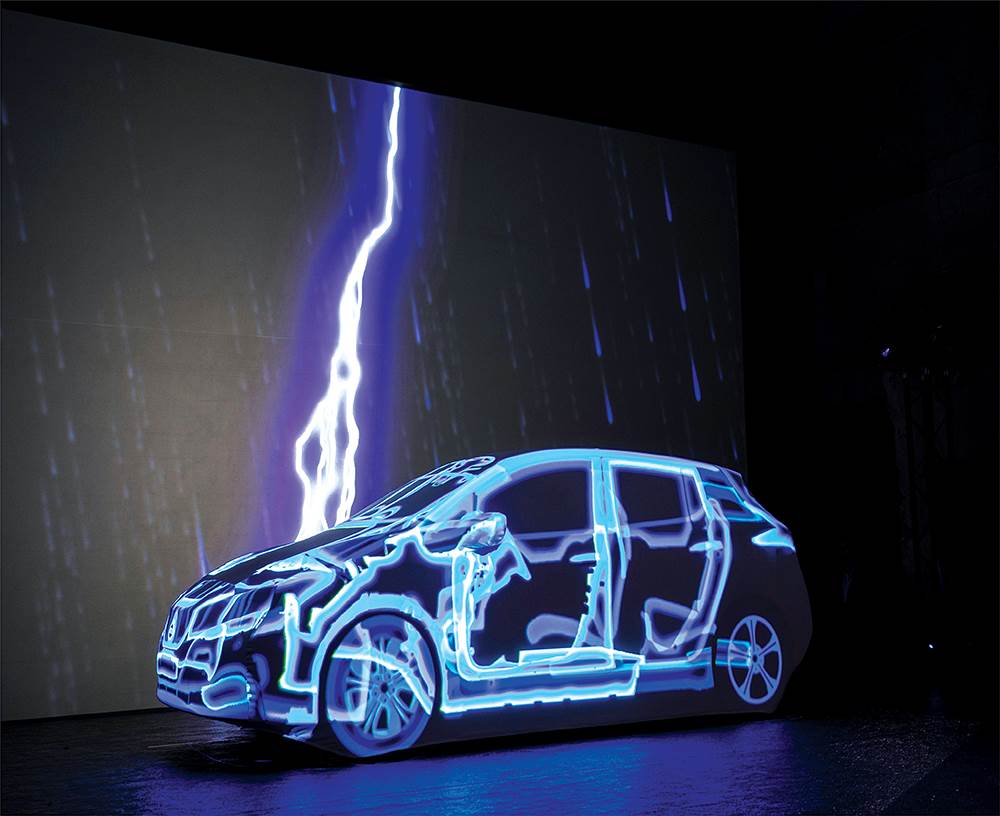
EVs offer green motoring but with parts like high-density battery packs, traction motors and controllers, BMS, an array of fuses, harnesses and contactors, reliable hardware and software are vital to ensure electrical safety in EVs. (Image courtesy Nissan)
Pure EVs are devoid of components like the engine, crankshaft, piston, connecting rod and fuel tank among others. This makes them relatively much smoother and quieter when compared to conventional petrol or diesel-fueled vehicles. But the presence of components like high-density battery packs (often Lithium Ion chemistry), traction motors and controllers, battery management systems, an array of fuses, harnesses and contactors means that these components bring newness to the system but also bring potential new hazards of electric shock, short circuit, fire and loss of traction control to the aspect of overall safety.
These electrical and electronic components are integrated to work together logically under diversified conditions of usage, severity and service conditions throughout the service life of the vehicle and this is achieved by firmware, application software providing the sensitive integration. Thus, if EVs have to operate safely, these components need to perform their functions very reliably over their lifecycle. Hence, reliability is vital when it comes to safety in EVs. Lack of reliable functioning on the part of critical hardware can compromise electrical safety. Reliable hardware and software are key to ensure electrical safety
in EVs.
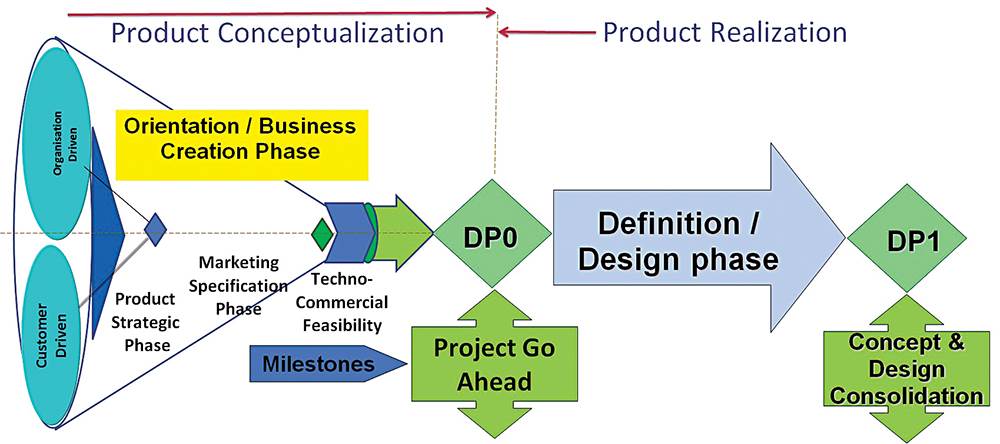
Product Development Cycle
Electrical Safety
While planning for electrical safety, the following aspects need to be kept in consideration:
- Design for safety
- Safe storage of critical systems and testing of critical systems
- Assembly line planning with multiple electrical safety check out systems
- Safety during storage of vehicle
- Safety during charging
- Safety during driving
- Safety under varying environment conditions
- Safety during and post accidents or crash
- Safety during service, repair and maintenance
- Safety during disposal
Design for safety: During the product development cycle, the prime focus at the design phase should be to ensure and build electrical safety in the vehicle design.
A ‘Safety Steering Committee’ is a must with members having knowledge on safety standards like FMVSS, IEC, ISO and SAE. This committee should formulate the safety strategy of the vehicle as well as review and audit the safety status at regular frequency. Regular design reviews on safety as shown in Figure 1 (depicted alongside) as DR1 and DR2 should be carried out.
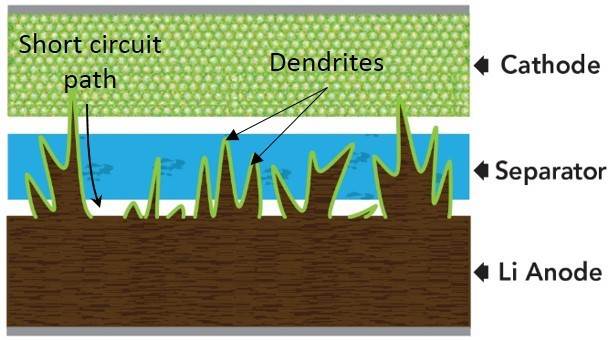
Li-ion batteries when stored for long duration without charging can cause ‘formation of dendrites’, thus increasing internal resistances and temperature over-runs inside.
SAE J 2344 provides guidelines for EV safety and designers must consider the following parameters while designing for safety :
Rated voltage of the system: Any voltage higher than 30 V AC or 60 V DC can cause harm to humans through electric shock. So, selection of higher voltages, important for the range of EVs, would require higher safety measures.
Electrical isolation: An exposure of 2 mA of AC current or 10 mA of DC current to the human body can cause harm; therefore, it is necessary that there is complete electrical isolation of the positive and negative high voltage bus with respect to the conductive structure of the vehicle. Guidelines suggest minimum insulation resistance requirements of 500 Ohms/Volt all the time. Any degradation or breakdown in the isolation need to be detected and a safety alarm raised or disconnect system becoming operational.
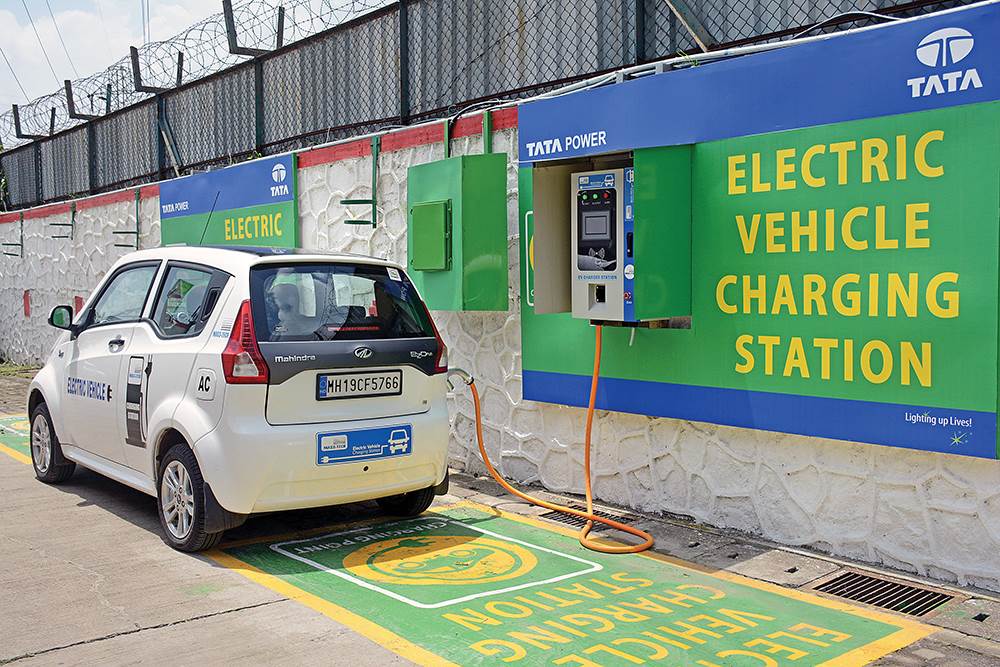
Tata Power's EV charging facility in Vikhroli, Mumbai. Continuous overcharging of the Li-ion cells due to lack of precise control by BMS can cause bulging and electrolytic leakage.
The design of other components like wiring harnesses, contactors and connectors should have adequate dielectric strength to meet the insulation resistance requirements.
Storage of critical systems: Critical sources of energy like the battery packs need to be handled sensitively, otherwise they can result in fire and smoke. Lithium-ion batteries contain huge energy while undergoing chemical, metallurgical reactions and need to be stored and preserved at a pre-designated isolated place with safety precautions in place. When stored for longer durations, they have a tendency to bulge, often resulting in increased electrolytic pressure inside and thereby causing a leak of the highly inflammable electrolyte to the environment. Hence, proper storage, charging and discharging protocol need to be maintained for proper health of the batteries. The packs must be paired properly to ensure minimum deviation in the cell voltages and the temperature gradients also needs to be managed within 3deg C during discharge.
Assembly line safety: During assembly, the fixtures should be designed in such a manner that at no point are operators exposed to high voltage, current or any isolation breakdown. The tools need to be special while operating the HV area and only trained operators with protective equipment should be allowed to operate. No tool should be dropped which can result in a short circuit. ESCOS (Electrical Safety Check Out Systems) should be planned at multiple stations so that the electrical isolation is checked from beginning to end as the vehicle is built.
Safety during vehicle storage: Customers should be informed as to how to keep the vehicle in good health by following a regular charging protocol. Very long duration storages without charging often cause ‘Dendrites formation’, which results in an increase in internal resistance and hence higher temperature during operations. They can also cause battery shorts, presenting a huge risk to safety.
Safety during charging: This is considered a most regular event in an EV’s life but one with safety concerns as it involves the vehicle being connected to an external charging infrastructure. An EV has the potential to damage the infrastructure in case something goes wrong in the vehicle while it is being charged. Likewise, the EV too can suffer damage if it is not charged as per the requirement. If the vehicle’s internal sub-system controls are not designed with the required accuracy and precision, it may result in the battery overcharging or undercharging and posing a safety risk. Continuous overcharging of the Lithium Ion cells can cause bulging and electrolyte leakage.
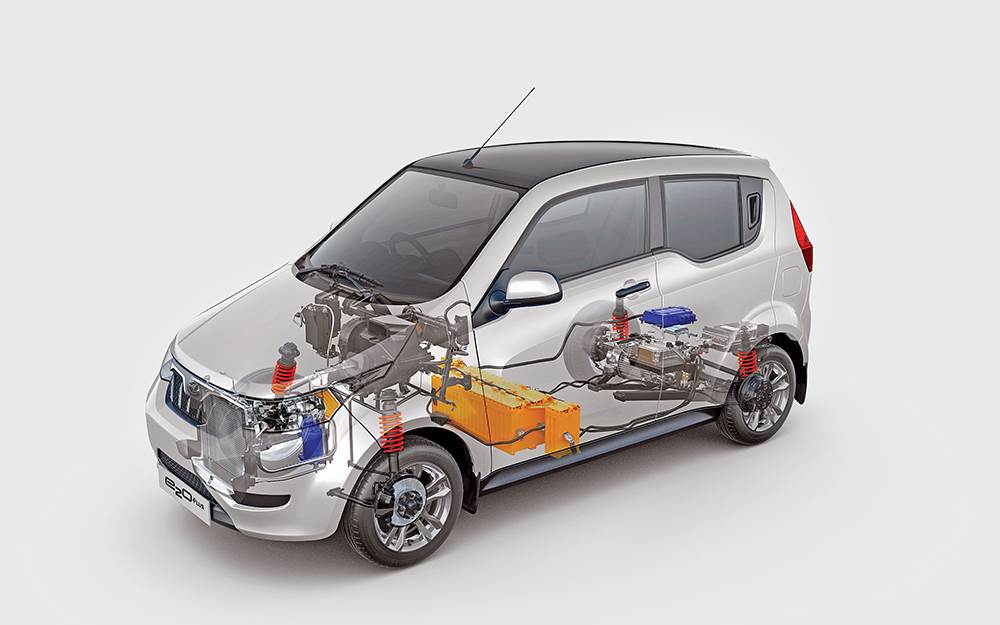
Cutaway illustration of the Mahindra e20 electric hatchback sold in India.
The conductive charging systems are thus regulated in all countries through standards and they are applicable for both normal charge and fast charge situations. SAE J 1772, IEC 61851, IEC 62196, GB/T 20234.2 are some of the standards which define the safety requirements.
In India, the Bharat charger specifications draft is aligned with these standards. But apparently, for Indian conditions, a surge test is required to be included which takes care of high-voltage surges which can come to the vehicle via the infrastructure in the event of a thunderstorm and the supply is not properly regulated.
Safety during driving: Indian standard AIS-038 has a simple requirement of electrical safety like the reverse speed limitation at a maximum of 20kph, power on indications, provision of protective devices like fuses and circuit breakers to limit any excessive current charging the battery system known as RESS – Rechargeable Energy Storage System. While some of the realistic safety concerns have not been addressed, vehicle jerk due to various reasons including regenerative braking is one of the most common safety concerns faced by EV drivers. These jerks are very random in occurrence and magnitude but leave a safety concern even if experienced once. Similarly, the issue of unintended acceleration has been faced by many EV makers and has caused serious accidents.
The most serious safety issue in EVs faced by customers has been incidences of fire due to malfunctioning of the battery system. In advanced cars, vents are provided at the bottom to allow any electrolyte leakage to escape and not enter the cabin. In India, it appears that such regulations still need to be framed – this is critical and imperative as the consequences can be highly catastrophic and life-threatening.
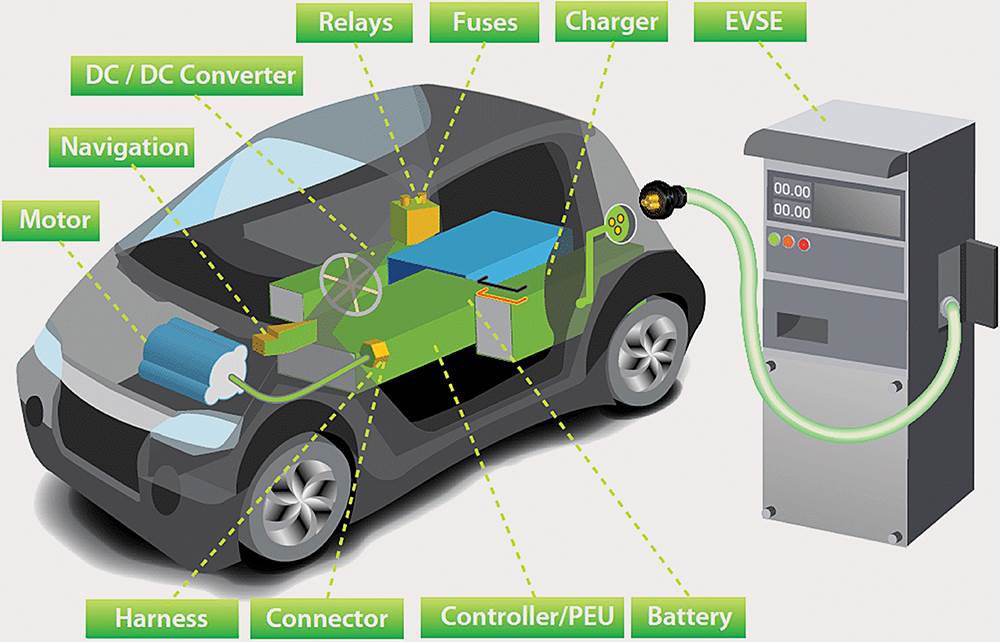
A good ESCOS (Electrical Safety Check Out System) in the end of line ensures complete safety of the EV.
SAE has conducted some tests on vehicle immersion in water and the potential impact of such a scenario can cause electric shock or can pollute the water, causing a health hazard to nearby people. This situation is similar to Mumbai floods where vehicles get immersed in rainwater.
Safety concerns due to the environment: Extreme
low sub-zero temperatures do not allow the charging of lithium-ion batteries as it is not safe. High temperatures in excess of 50deg C seriously undermine the performance and safety of the batteries and they need a cooling system to maintain adequate operating temperatures.
The effects of corrosive, salty and chemical environment on the battery terminals, bus bars, contacts and fuses need to be simulated well by vehicle designers to ensure safety and prevent a breakdown of electrical isolation.
Safety pre and post-accident: In EVs, it is not only the crash requirements which need to be met, but it is the ‘Post Crash Electrical Integrity’ of the vehicle which would determine the safety of the occupants and its surroundings. If the lithium-ion pack is not compliant with the ‘Crush Test’, it can catch uncontrollable fire. It is also possible that the electric isolation is broken and the occupant(s) are exposed to either high voltage, currents and short circuits. The standards require the vehicles to be compliant and suggest suitable tests.
Safety during service, repair and maintenance: EVs are to be provided with a service disconnect switch to ensure operator safety against exposure to high voltage or currents. HV areas are marked with appropriate symbols. Yet in reality, extra training is required to be provided while attending the service issues in EVs. Simply dropping of a metallic part between the battery cells can cause a short in the battery pack. If the fuses are not properly designed or selected or show a time lag before operating, all the energies can be transferred within no time and a potential fire hazard is likely.
Safety during disposal: Precaution needs to be taken during disposal of an EV as it is not similar to a conventional vehicle and the handlers need to be qualified to do the job safely.
Safety concerns due to software: Bugs in the software or untested used cases which have not been defined earlier can cause the same devastation as hardware in the EVs. Software validation and hazard prediction is a must activity now with good EV designers. ISO 26262 (part 1 to 9) provides detailed description on functional safety, hazard levels and fault tree analysis for diagnostics. A good designer needs to be aware of these standards and practice them while designing.
Thus, it is clear that EVs bring huge challenges in terms of safety. With demand for EVs growing in developed markets and gradually in India, the real issues will emerge and would need continual speedy improvements. In India, the current regulatory standards are ephemeral and would not provide foolproof safety to users and hence need to be upgraded continuously.
This feature was first published in Autocar Professional's Green Industry Special - April 1, 2018.
RELATED ARTICLES
BRANDED CONTENT: Eliminating the worries of battery charging with smart solutions
The charging infrastructure is the backbone of electric mobility but is also one of the key perceived barriers to EV ado...
The battery-powered disruptor
Greenfuel Energy Solutions is planning to shake up the EV battery market with the launch of a portfolio of specially eng...
SPR Engenious drives diversification at Shriram Pistons & Rings
The engine component maker is now expanding its business with the manufacturing of motors and controllers through its wh...





 22 Apr 2018
22 Apr 2018
 19814 Views
19814 Views



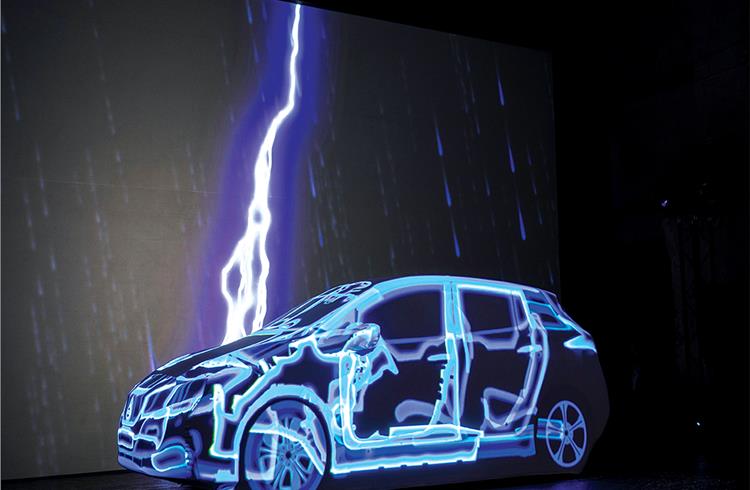

 Autocar Pro News Desk
Autocar Pro News Desk




